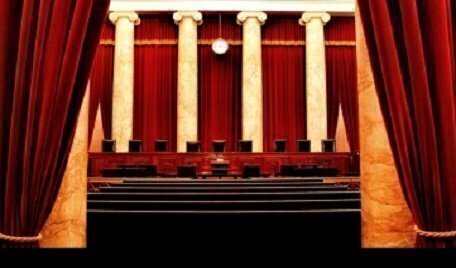For the first time since it gave broad new constitutional protection to individuals’ gun rights more than a decade ago, the Supreme Court agreed on Tuesday to consider expanding those rights outside of one’s own home.
 A new test case from New York City, involving when a handgun can be moved from place to place outside the home, is expected to be heard at the Court’s next term, not in the remaining months of the current term. That means a final ruling is not likely until sometime in 2020.
A new test case from New York City, involving when a handgun can be moved from place to place outside the home, is expected to be heard at the Court’s next term, not in the remaining months of the current term. That means a final ruling is not likely until sometime in 2020.
A deeply split Court in 2008 ruled for the first time that the Constitution’s Second Amendment protects a personal right to have a gun for use in self-defense in the home. That right was extended nationwide, and thus became enforceable against state laws, in 2010. Since then, the Justices have turned aside every attempt by gun rights advocates to extend the Second Amendment’s beyond the home. That is exactly what is ultimately at stake in the new case.
While the law at issue is very specific in what it allows and forbids, the Court has the option of speaking more broadly about what the Second Amendment means. That’s because the threshold constitutional question is: Does the right to possess and carry a gun ever go beyond the threshold of one’s residence? Gun rights advocates have tried in vain to get that question answered.
It is also significant that the case was taken to the Court, on behalf of three New York City residents, by a prominent and highly respected lawyer – Washington, D.C., attorney Paul D. Clement – who has been one of the gun rights movement’s most energetic advocates. Up to now, despite repeated tries, he had not persuaded the Court to rule on any of a series of test cases, several pursued on behalf of the National Rifle Association. On Tuesday, he succeeded.
It seems quite likely that the change in the Court’s membership contributed to its new willingness to return to the question of how far Second Amendment rights reach. While it takes only the votes of four Justices to grant review of a case, the Court in highly controversial areas of the law is reluctant to take on cases unless there is a strong prospect that a majority of five can be formed for a final ruling. With the addition to the bench last fall of Justice Brett M. Kavanaugh, who is considered to be more conservative than the Justice he replaced (now-retired Anthony M. Kennedy), there is a genuine possibility that a new majority can be put together to advance gun rights.
One of the other Justices, Clarence Thomas, has protested repeatedly when the Court refused to hear prior appeals on gun rights, including cases involving flat bans on high-powered assault guns and large bullet feeders. In fact, Thomas has argued that the Court was treating the Second Amendment’s “right to keep and bear arms” as “second-class” constitutional guarantees.
The appeal that the Court has now agreed to review contends that New York City gun laws are “draconian” in their restriction of personal rights. The city requires every person who wants to own a handgun to obtain a license, allowing them to possess it within their own home. That part of its laws is not directly at issue. What is at stake are additional restrictions that control the movement of a handgun outside the home.
Aside from a right to have the gun while at home, the city allows the holder of a license to transport it – unloaded, in a locked container, and with the bullets in a separate container – to a practice firing range or shooting club. Regulations to enforce the licensing scheme do not allow the gun to be transported to a second residence of the license holder, and forbid its transport to any firing range or shooting club outside the city limits. (There reportedly are only seven such sites within New York City.)
The three city gun owners who either want to carry their handguns to another home they have or to go to firing ranges outside of New York City challenged the constitutionality of these restrictions under the Second Amendment and other constitutional rights. Lower courts rejected the challenge, concluding that the measures were related to the city’s concern about public safety, including having handguns circulating within the city.
As the case reached the Court, it involves not only the Second Amendment, but also two other constitutional provisions: the restrictions on state or local government power to control the movement of property across state borders, and the right to travel. It is conceivable that the Court, if it decided to strike down the restrictions on handgun transport, to base a ruling on one of those other provisions. The Second Amendment, though, is likely to be argued most vigorously by both sides.
The New York City case was the only new dispute that the Justices on Tuesday agreed to decide.
Lyle Denniston has been writing about the Supreme Court since 1958. His work has appeared here since mid-2011.







